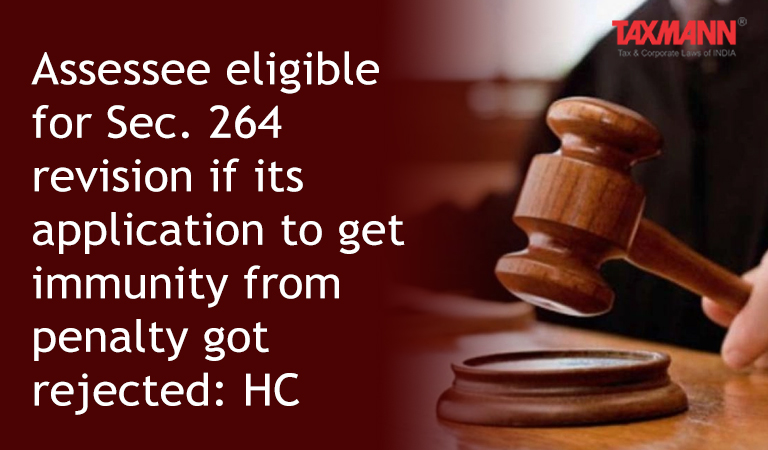Assessee eligible for Sec. 264 revision if its application to get immunity from penalty got rejected: HC
- Blog|News|Income Tax|
- 2 Min Read
- By Taxmann
- |
- Last Updated on 17 November, 2021

Case Details: Haren Textiles (P.) Ltd. v. PCIT - [2021] 132 taxmann.com 39 (Bombay)
Judiciary and Counsel Details
-
- K.R. Shriram and Abhay Ahuja, JJ.
- Jintendra Singh for the Petitioner. Sham V. Walve for the Respondent.
Facts of the Case
The assessee was engaged in the business of manufacturing and selling fabrics. It was also a trading member in the National Stock Exchange. It filed its Return of Income (ITR), declaring a total income of Rs. 2,27,11,32.
Assessing Officer (AO) initiated scrutiny assessment by issuing statutory notices under sections 143(2) and 142(1). He passed the Assessment order determining the total income at Rs. 7,41,84,730 and also determined book profit under the provisions of section 115JB at Rs. 2,19,33,505. Following the Assessment Order, he issued a demand notice.
The assessee accepted the order and duly paid the tax demand determined by the AO. After that assessee filed an application under section 270AA, in Form No. 68, seeking immunity from penalty, etc. However, the AO rejected the application.
Aggrieved by the order, the assessee filed a revisional application under section 264 before the Commissioner (CIT) against the assessment order. CIT rejected the application because section 270AA(6) specifically prohibits revisionary proceedings against the assessment order if assessee filed an application seeking immunity from penalty. Aggrieved-assessee filed the writ petition before the Bombay High Court.
High Court Held
The Bombay High Court held that as per section 270AA(6), no appeal under section 246A or an application for revision under section 264 shall be admissible against the order of assessment or reassessment if an order has been passed by AO accepting the application of assessee seeking immunity from penalty.
This only means that when an assessee makes an application and AO has accepted such application, the assessee cannot file an appeal under section 246A or an application for revision under section 264. This does not provide any bar or prohibition against the assessee challenging an order passed by the Assessing Officer rejecting its application.
Therefore, CIT was not correct in rejecting the section 264 application on the ground that there was a bar under section 270AA(6) in filing such application.
Disclaimer: The content/information published on the website is only for general information of the user and shall not be construed as legal advice. While the Taxmann has exercised reasonable efforts to ensure the veracity of information/content published, Taxmann shall be under no liability in any manner whatsoever for incorrect information, if any.

Taxmann Publications has a dedicated in-house Research & Editorial Team. This team consists of a team of Chartered Accountants, Company Secretaries, and Lawyers. This team works under the guidance and supervision of editor-in-chief Mr Rakesh Bhargava.
The Research and Editorial Team is responsible for developing reliable and accurate content for the readers. The team follows the six-sigma approach to achieve the benchmark of zero error in its publications and research platforms. The team ensures that the following publication guidelines are thoroughly followed while developing the content:
- The statutory material is obtained only from the authorized and reliable sources
- All the latest developments in the judicial and legislative fields are covered
- Prepare the analytical write-ups on current, controversial, and important issues to help the readers to understand the concept and its implications
- Every content published by Taxmann is complete, accurate and lucid
- All evidence-based statements are supported with proper reference to Section, Circular No., Notification No. or citations
- The golden rules of grammar, style and consistency are thoroughly followed
- Font and size that’s easy to read and remain consistent across all imprint and digital publications are applied




